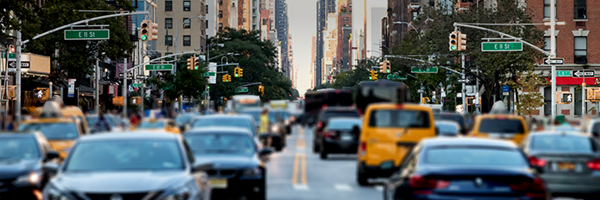- 킨드릴, 엔터프라이즈용 AI 전용 프라이빗 클라우드 서비스 출시
- Want a free Samsung Music Frame? Buy one of these TVs or soundbars to get one
- This rugged Android is my pick for off-grid adventures - and it's on sale for $250
- Publisher’s Spotlight: Veriti
- IBM X-Force: Stealthy attacks on the rise, toolkits targeting AI emerge
Connected roadway infrastructure—now is the time – Cisco Blogs

Thanks to the new infrastructure bill, the pace of connecting roadside infrastructure is about to exponentially take off. The bill and its ramification positively impacts anyone who drives, bikes, or walks. Contrary to expectations, telework during the COVID-19 pandemic didn’t reduce accidents. Instead, the National Highway Traffic Safety Administration (NHTSA) estimates that traffic fatalities in 2020 were up 7.2% over 2019. Congestion is returning to pre-pandemic levels. We spend an average of 97 hours a year sitting in traffic—time I’d rather spend playing with my kids. Gridlock costs the U.S. an estimated $179 billion (source: Texas A&M Transportation Institute).
Investments with big payoffs
Against this backdrop, I’ve been hearing from state and local departments of transportation (DOTs) looking for the best investments to improve safety, increase efficiency, and reduce congestion and carbon footprints. Below are five projects for roadways and intersections that improve safety and reduce congestion. In my next blog, I’ll talk more about the Cisco solutions behind them.
1 – Video surveillance at high-traffic intersections and highways
Video surveillance helps to improve safety in several ways. Seeing when and where congestion occurs, you can alleviate it with actions like adjusting signal timing at particular times of day. When drivers know the roadway is monitored, they’re inclined to drive more safely, reducing traffic violations. And with real-time video analytics, cities can detect when someone walking with a cane or using a wheelchair or stroller needs more time to cross the street, and then automatically adjust the signal timing.
Video surveillance no longer requires expensive cabling throughout the city. Instead, mount cameras at the intersection and install a Cisco industrial router in a roadside cabinet. Our routers stream real-time video to your operations center over cellular, Cisco Ultra-Reliable Wireless Backhaul, or fiber connections. By using Ultra-Reliable Wireless Backhaul instead of cabling.
2 – Connected traffic signal controllers
Many people are surprised to learn that most traffic signal controllers aren’t connected to a network. That means DOTs don’t find out about a signal malfunction until someone calls to report it. Without network access, technicians have to drive to a site to make repairs or adjust signal phase and timing.
Controllers can connect to the network via our industrial switches, industrial routers, or ultra-reliable wireless backhaul solutions. Then personnel at the traffic operations center can detect problems right away, remotely adjust signal phase and timing, and monitor for cybersecurity threats. The payoffs are less congestion, better safety, and fewer truck rolls.
3 – Traffic signal priority and emergency vehicle preemption
Traffic signal priority (TSP) gives extra green-light time to transit vehicles like buses and light rail, helping them stay on schedule and alleviating congestion at intersections. Signal preemption is TSP’s cousin, automatically turning the light green when a first-responder vehicle approaches.
To introduce TSP or emergency vehicle preemption, deploy our FirstNet-ready industrial router in a roadside cabinet near the intersection. Or, to connect over fiber, use our industrial switches.
4 – Dynamic message signs

Some message signs are funny. Mostly, they’re a practical way to warn drivers about risky conditions like lane closures, accidents, bad weather, and emergency evacuations. More aware drivers are less likely to get into an accident, and real-time traffic alerts can reduce delays.
Our industrial internet of things (IoT) solutions make it easy to connect message signs and display dynamic messages to warn drivers about traffic or weather conditions. Signs communicate with an industrial switch or router in a nearby cabinet, which connects to your operations center over a fiber or cellular network.
5 – Remote weather information system
Monitoring weather and road conditions to warn drivers of hazardous conditions ahead can help prevent accidents and delays. Remote weather information systems (RWIS) collect weather data from sensors—for example, fog, high winds, and snowstorms. Our industrial routers retrieve weather data from RWIS and transmit it to message signs over cellular networks.
Register now
November 30 or December 2, 2021
Learn more about connected roadways and intersections
Check back for the next blog in this Connectivity for Roadways and Intersections series for more details on Cisco solutions.
Learn more about the industrial IoT solutions mentioned here:
Share:


